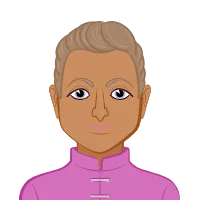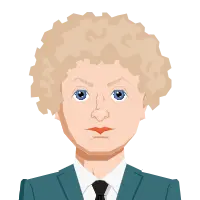Claim Your Discount Today
Start the New Year with a smarter, more organized approach to your programming assignment at www.programminghomeworkhelp.com. Get expert help from experienced programmers who deliver well-documented, logically structured, and compiler-ready code aligned with university grading standards. From data structures and algorithms to object-oriented programming, debugging, database integration, and implementations in C, C++, Java, Python, and MATLAB, every solution features clean logic, optimized performance, and clear in-code comments for easy evaluation and timely submission.
We Accept
Sample Assignments on Pointers Showcasing Our Expertise in C programming
In our sample section, we feature exemplary Pointers assignments crafted by our experts. These samples demonstrate the caliber of work you can expect when you choose our services. Each assignment showcases our expertise in handling various aspects of Pointers in C programming, from basic concepts to intricate problem-solving scenarios.
C
C
C
C
C
C
C
C
C
C
C
C
C
C
C
C
C
C
C
C
Affordable Pointers Assignment Help Tailored to Your C Programming Course Needs
At ProgrammingHomeworkHelp.com, we understand the financial constraints students often face. That’s why we offer flexible pricing tailored to accommodate various budgets without compromising on the quality of our Pointers assignment help. Our customized rates ensure transparency and affordability, with pricing structured to reflect the complexity and urgency of each assignment. Below is a sample of our price ranges for common Pointers in C programming assignments:
| Assignment Type | Price Range (USD) |
|---|---|
| Pointer Basics and Operations | $50 - $100 |
| Pointer and Arrays | $60 - $120 |
| Dynamic Memory Allocation with Pointers | $70 - $140 |
| Pointer to Functions | $80 - $160 |
| Pointer and Structures | $90 - $180 |
| Pointer and File Handling | $100 - $200 |
| Pointer Arithmetic and Pointer Casting | $110 - $220 |
| Advanced Pointer Concepts | $120 - $240 |
- Pointers Assignment Help
- What are Pointers in C Programming
- Who Makes Our Team of Pointers Assignment Helpers Well-Versed in C Programming?
- Do My C Programming Assignment on Pointers: Topics Our Skilled Tutors Excel in
- Avail Our Exceptional Help with C Programming Homework on Pointers & Enjoy Exciting Discounts
Pointers Assignment Help
For more than a decade, we have been providing quality solutions with detailed explanations to thousands of students struggling with their C assignments on pointers. Our experienced team of experts ensures that each assignment is tailored to meet your specific needs, guaranteeing a comprehensive understanding of pointers. With our Pointers assignment help, you can expect clear and concise explanations, enabling you to master the complexities of pointers in C programming. Trust our proven track record and let us help you achieve academic excellence. Join the ranks of satisfied students who have benefited from our Pointers homework help today!
What are Pointers in C Programming
Pointers are a fundamental feature of the C programming language that provide a way to directly access and manipulate memory locations. A Pointer is a variable that stores the memory address of another variable, allowing for efficient array handling, dynamic memory allocation, and the creation of complex data structures like linked lists and trees. By using pointers, C programmers can optimize their code for performance and memory usage, as well as implement functions that can modify the actual values of variables rather than just their copies. Pointers enhance the flexibility and power of C, making it a versatile language for system-level programming.
To showcase our expertise in pointers, here is a sample code written by our C programming experts. This example demonstrates how pointers can be used to modify the values of variables in C by passing their addresses to functions.
#include <stdio.h>
// Function to swap the values of two integers using pointers
void swap(int *a, int *b) {
int temp = *a;
*a = *b;
*b = temp;
}
int main() {
int x = 10;
int y = 20;
printf("Before swap:\n");
printf("x = %d, y = %d\n", x, y);
// Call the swap function and pass the addresses of x and y
swap(&x, &y);
printf("After swap:\n");
printf("x = %d, y = %d\n", x, y);
return 0;
}
Who Makes Our Team of Pointers Assignment Helpers Well-Versed in C Programming?
At ProgrammingHomeworkHelp.com, our team of Pointers assignment helpers at ProgrammingHomeworkHelp.com is meticulously selected to ensure we deliver the highest quality assistance to our clients. Each expert possesses a unique blend of qualifications and experience, making them proficient in tackling even the most challenging C programming assignments involving pointers.
- PhD Qualified Programmers: Our team includes PhD qualified C programmers who bring extensive theoretical knowledge and research expertise to every assignment. They are adept at delving deep into complex Pointer concepts and providing innovative solutions.
- Former C Programming Professors & Lecturers: With backgrounds as former professors and lecturers in C programming, our experts have a deep understanding of academic requirements and grading standards. They ensure that your assignments not only meet but exceed academic expectations.
- Industry Practitioners: Complementing their academic backgrounds, many of our team members are industry practitioners with hands-on experience in applying C programming and pointers in real-world scenarios. This practical knowledge ensures that your assignments are not only academically sound but also relevant to industry needs.
Our programming homework helpers are dedicated to delivering customized solutions, detailed explanations, and prompt assistance to help you achieve academic success. With their expertise and commitment, you can be confident in receiving top-notch solutions tailored to your specific requirements.
Do My C Programming Assignment on Pointers: Topics Our Skilled Tutors Excel in
At ProgrammingHomeworkHelp.com, we excel in providing comprehensive assistance on various C programming assignment topics related to Pointers. Our team of experts is well-versed in these areas, ensuring that each “do my C programming assignment on Pointers” request is meticulously handled to meet your academic requirements and deadlines.
- Pointer Basics and Operations Assignment: Whether it’s understanding pointer syntax or performing basic pointer arithmetic, our experts can guide you through every step of your assignment on pointer fundamentals.
- Pointer and Arrays Assignment: Crafting assignments that involve pointers and arrays requires a deep understanding of memory allocation and accessing array elements via pointers. Trust our team to deliver accurate and well-structured solutions.
- Dynamic Memory Allocation with Pointers Assignment: Handling dynamic memory allocation using pointers is crucial in C programming. Our experts can assist you in assignments involving malloc, calloc, realloc, and proper memory management practices.
- Pointer to Functions Assignment: Assignments on pointers to functions require knowledge of function pointers, callback functions, and their applications. Our team can help you grasp these concepts and excel in your assignments.
- Pointer and Structures Assignment: Integrating pointers with structures involves complex data handling and memory management. Our experts specialize in crafting assignments that demonstrate proficiency in these areas.
- Pointer and File Handling Assignment: Assignments involving pointers and file handling require skills in reading from and writing to files using pointers. Count on our team to deliver assignments that showcase effective file manipulation techniques.
- Pointer Arithmetic and Pointer Casting Assignment: Understanding pointer arithmetic and casting pointers correctly is crucial for efficient memory manipulation. Our experts can assist you in assignments that focus on these advanced concepts.
- Advanced Pointer Concepts Assignment: From pointers to pointers (double pointers) to void pointers and beyond, our team is equipped to handle assignments that delve into advanced pointer concepts, ensuring clarity and precision in your submissions.
When you are thinking, “I need to pay someone to do my C programming assignment on pointers,” trust ProgrammingHomeworkHelp.com to provide expert guidance and tailored solutions that guarantee academic success.
Avail Our Exceptional Help with C Programming Homework on Pointers & Enjoy Exciting Discounts
At ProgrammingHomeworkHelp.com, we value our students and strive to make our online help with pointers assignments not only top-notch but also affordable. We offer various exclusive discounts to ensure that every student can benefit from our expert help with C programming assignments on Pointers.
- Refer a Friend Discount: When you refer a friend to our service, you both enjoy a generous 50% discount off your next assignment. It’s our way of thanking you for spreading the word about our reliable assistance.
- 20% Discount on Your Second Order: For returning customers, we offer a special 20% discount on your second order. We appreciate your continued trust in our services and aim to reward your loyalty with savings on your assignments.
- Bulk Orders Discount: Planning to place multiple orders? Our bulk orders discount ensures that the more assignments you entrust to us, the more you save. Contact us for personalized pricing and discounts tailored to your needs.
- Seasonal Discounts: Throughout the year, we provide seasonal discounts to make our services even more accessible. Keep an eye on our website or subscribe to our newsletter to stay updated on the latest offers and promotions.
These exclusive discounts are designed to make our Pointers in C programming assignment help more cost-effective while maintaining the highest standards of quality and reliability. Trust us to deliver exceptional solutions while saving on your academic expenses.
Boost Your Knowledge of Pointers in C Programming Through Our Blog
Explore our blog section to discover insightful articles and resources related to Pointers in C programming. Our blog covers a wide range of topics, from beginner guides on pointer basics to advanced tutorials on pointer manipulation and optimization techniques. Stay updated with the latest trends and tips in C programming through our informative posts written by our experts. Whether you're looking to deepen your understanding of pointers or seeking practical advice on tackling assignments, our blog is your go-to resource.
More than 1.1K Reviews from Our Valued Clients with an Average Rating of 4.8/5
In our review section, you'll find genuine feedback from students who have benefited from our Pointers assignment help services. Our clients appreciate our commitment to delivering high-quality solutions that meet their academic requirements and deadlines. Read through their testimonials to gain insights into their experiences and how our experts have helped them achieve their academic goals. Your satisfaction is our priority, and we strive to maintain our reputation for excellence through every assignment we complete.
Meet our 100+ Pointers Assignment Experts Behind Your Academic Success
Our team of Pointers assignment helpers comprises seasoned professionals with diverse backgrounds in C programming and extensive experience in academia and industry. Each Pointers assignment expert is carefully selected for their proficiency in handling various complexities of Pointers in C assignments. With qualifications ranging from PhDs in Computer Science to former professors and industry practitioners, our team is dedicated to providing tailored solutions that ensure your academic success. Whether you need assistance with basic pointer operations or advanced concepts like pointer arithmetic and dynamic memory allocation, our experts are here to help you excel.

Camila Perry
PhD in Programming
🇺🇸 United States
Camila Perry, an experienced programmer with a degree from the Princeton University, specializes in teaching efficient memory management and advanced C programming techniques.

Andrew Reisinger
PhD in Programming
🇺🇸 United States
Andrew Reisinger is a seasoned C Programming Assignment Expert with over a decade of experience. Specializing in data structures, algorithms, and embedded systems, he helps students and professionals tackle complex C programming challenges. John is known for his clear explanations, strong problem-solving skills, and dedication to student success.

Philip Dudley
PhD in Programming
🇺🇸 United States
Philip Dudley is a seasoned software engineer with over 10 years of experience specializing in C programming and systems-level development. He excels in file descriptor management, memory allocation, and performance optimization. Philip has a strong track record of mentoring students and professionals, helping them master complex programming concepts and improve their coding practices for robust software solutions.

James Maker
Masters in Programming
🇺🇸 United States
James Maker is a seasoned C Programming Assignment Expert with over a decade of experience. Specializing in linked lists, file I/O, and bitwise operations, Alex provides expert guidance and solutions. With a strong background in computer science, Alex helps students master complex assignments and optimize their coding skills.

Andrew Hicks
Masters in Computer Science
🇺🇸 United States
Andrew Hicks, a seasoned software engineer, specializes in high-performance systems and memory management with over 15 years of experience.

Robert Horta
Masters in C
🇬🇧 United Kingdom
Alex Johnson is a seasoned C programming expert with over a decade of experience. He has helped over 1,000 students excel in their C assignments through personalized tutoring and clear, efficient code solutions. Alex holds advanced degrees in computer science and has received multiple awards for his exceptional teaching and programming skills.

Elijah Patel
Masters in C
🇦🇺 Australia
Elijah Patel is a seasoned C assignment help Expert with 12 years of experience. Holding a Master's degree from the University of New South Wales, Australia.

Damien Carrick
Bachelor of Science degree in Computer Science
🇬🇧 United Kingdom
Damien holds a Bachelor of Science degree in Computer Science and specializes in data structures and algorithms for game programming in C. With over 900 completed orders, he is proficient in designing efficient and scalable solutions for game simulations.

Isabella Ruiz
Bachelor of Engineering
🇺🇸 United States
Isabella Ruiz is a Bachelor of Engineering graduate. She is skilled in physics simulation and collision detection for game development in C. With over 600 completed orders, she specializes in creating realistic and immersive gaming experiences.

Jake Walker
Master's degree in Software Engineering
🇬🇧 United Kingdom
Jake Walker, with a Master's degree in Software Engineering, is adept at implementing efficient game loops and handling user inputs in C. Having completed over 700 orders, he excels in optimizing performance and debugging C game simulations.

Dr. Miriam Goldbridge
Ph.D. in Computer Science
🇬🇧 United Kingdom
Dr. Miriam Goldbridge holds a Ph.D. in Computer Science and specializes in game development using C programming. With over 800 completed orders, she has extensive experience in crafting complex game simulations with a focus on AI algorithms and graphics rendering.

Prof. Rachel Anderson
M.Sc. in Software Engineering
🇨🇦 Canada
Prof. Rachel Anderson holds an M.Sc. in Software Engineering from the University of Toronto and has completed over 600 assignments on Strings. With a focus on user interface development and human-computer interaction, Prof. Anderson excels in formatting strings for output and implementing user-friendly string handling features. Her expertise includes integrating string operations with graphical user interfaces (GUI) and optimizing string formatting for performance.

Dr. Oliver Mitchell
Ph.D. in Computer Science
🇦🇺 Australia
Dr. Oliver Mitchell holds a Ph.D. in Computer Science from the University of Melbourne and has successfully completed over 900 assignments on Strings in C. Dr. Mitchell specializes in Unicode handling, multibyte character sets, and internationalization in programming. His expertise extends to implementing secure string manipulation functions and optimizing string search algorithms for diverse applications.

Prof. Elizabeth Taylor
Master's in Computer Engineering
🇬🇧 United Kingdom
Prof. Elizabeth Taylor is a seasoned professional with a Master's degree in Computer Engineering from MIT and has completed over 700 C programming assignments related to Strings. Prof. Taylor's expertise lies in software development methodologies and debugging techniques. She excels in crafting robust solutions for string parsing, tokenization, and implementing custom string functions. Prof. Taylor's dedication to precision and clarity ensures that students receive well-documented and efficient solutions.

Dr. Benjamin White
Ph.D. in Computer Science
🇺🇸 United States
Dr. Benjamin White holds a Ph.D. in Computer Science from Stanford University and has completed over 800 C programming assignments on Strings. With a specialization in algorithm design and analysis, Dr. White excels in developing efficient solutions for complex programming tasks. His expertise includes string manipulation, dynamic memory allocation, and optimization techniques. Dr. White is committed to delivering high-quality solutions that meet academic standards and exceed expectations.

Prof. Isabella Storey
MEd in Computer Science
🇨🇦 Canada
Prof. Isabella Storey, an accomplished educator with an MEd in Computer Science from McGill University, has completed over 600 assignments on Pointers in C. With a teaching tenure at the University of Toronto, Prof. Storey specializes in pointer and array manipulation, pointer arithmetic, and error handling in pointer operations. Her assignments focus on foundational concepts that lay a strong groundwork for advanced C programming skills.

Dr. Liam Davies
PhD in Software Engineering
🇦🇺 Australia
Dr. Liam Davies, with a PhD in Software Engineering from the University of Sydney, has successfully completed more than 900 assignments on Pointers in C. As a seasoned industry practitioner in Melbourne, Dr. Davies specializes in pointer to functions, pointer-based data structures, and real-time applications of pointers. His assignments emphasize practical implementations that bridge theoretical knowledge with industry demands.

Prof. Rachel Reynolds
MSc in Computer Engineering
🇺🇸 United States
Prof. Rachel Reynolds brings her expertise as a former professor at Harvard University with over 700 completed C assignments on Pointers. Holding an MSc in Computer Engineering from MIT, Prof. Reynolds excels in pointer basics, pointer casting, and the application of pointers in data structures. Her assignments often focus on enhancing pointer efficiency in algorithmic solutions and integrating pointers with object-oriented programming concepts.

Dr. James Mitchell
Ph.D in Computer Science
🇬🇧 United Kingdom
Dr. James Mitchell holds a PhD in Computer Science from Oxford University and has completed over 800 C programming assignments on Pointers. With a background as a former lecturer at University College London, Dr. Mitchell specializes in dynamic memory allocation, pointer arithmetic, and file handling with pointers. His expertise extends to optimizing memory usage in complex data structures and implementing efficient algorithms using pointers.

Prof. Ethan Lee
Master's in Computer Science
🇨🇦 Canada
Professor Ethan Lee, with a Master's degree in Computer Science from a prominent university in Canada, has successfully handled over 600 assignments on memory allocation using C. Prof. Lee's expertise spans across teaching fundamental programming concepts, implementing efficient memory allocation strategies, and providing practical solutions to challenging programming assignments.
Related Topics
Frequently Asked Questions
Have questions about our Pointers assignment help services? Check out our FAQs for answers to commonly asked questions. Can't find what you're looking for? Feel free to reach out to our 24/7 customer support team via live chat for immediate assistance. We're here to ensure your experience with us is seamless and satisfactory.
We guarantee high-quality solutions that adhere to academic standards and guidelines. Our experts include detailed explanations, well-commented code, and thorough testing to ensure clarity and correctness in every assignment. Moreover, you can review our sample assignments and client testimonials for assurance of our commitment to academic excellence.
Yes, we excel in assignments involving file handling with pointers in C. Our experts utilize fseek, fread, fwrite, and other file manipulation functions to read from and write to files efficiently. We ensure data integrity, error handling, and optimal performance in file operations as per your assignment requirements.
Absolutely! Our team has extensive experience in implementing pointer to functions, including callback mechanisms and dynamic function invocation. We provide detailed solutions that demonstrate clear understanding of function pointer syntax and application in real-world scenarios.
Our experts are proficient in implementing malloc, calloc, realloc, and free functions to manage dynamic memory allocation effectively. They ensure memory integrity and efficient allocation strategies, backed by thorough testing and error handling to meet your assignment specifications.
Pointers in C assignments often pose challenges related to memory management, pointer arithmetic, and understanding complex data structures. Our experts specialize in addressing these challenges by providing clear explanations and step-by-step solutions tailored to your assignment requirements.









